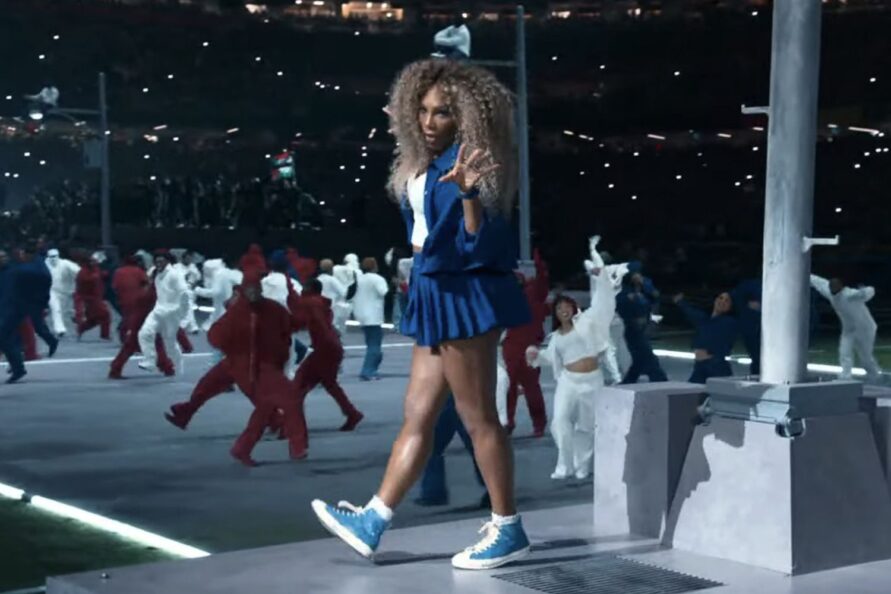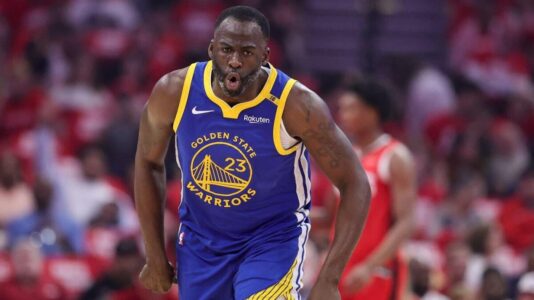Serena Williams Shines in Kendrick Lamar’s Historic Super Bowl Halftime Show
In a dazzling display of talent and cultural significance, Serena Williams made a memorable appearance during Kendrick Lamar’s performance at the 2025 Super Bowl halftime show. While the event was celebrated by many, it also sparked controversy, drawing parallels to the criticism Williams faced over a decade ago for her expressive dance moves. Her husband, Alexis Ohanian, co-founder of Reddit, took to social media to defend her and emphasize the importance of the moment.
A Historic Performance
Serena Williams’ cameo in the Super Bowl halftime show was much more than just a notable appearance; it represented a culmination of years of resilience against criticism. Ohanian pointed out the backlash his wife received for her dance at the 2012 Olympics when she celebrated her victory against Maria Sharapova with a C-walk. The dance, rooted in L.A. gang culture, drew harsh criticism from some media outlets, who accused Williams of promoting gang affiliations.
Now, thirteen years later, Williams danced again—this time on one of the world’s biggest stages. Ohanian justified the moment by writing, “Some of y’all have no idea how criticized Serena was for this same dance at Wimbledon 13 years ago and it shows…. This is bigger than the music.” This statement underscores the layered socio-cultural dynamics surrounding Williams’ expression through dance and the evolution of public perception over the years.
Record-Breaking Viewership
The halftime show not only captivated millions but also achieved an extraordinary feat in viewership. According to Billboard, the performance drew 133.5 million viewers, making it the most-watched Super Bowl halftime show of all time. This figure surpasses the previous record set by Michael Jackson during his legendary performance in 1993, highlighting the immense draw and significance of both Lamar’s music and Williams’ appearance.
Cultural Impact and Redemption
Williams’ participation in the Super Bowl halftime show transcended entertainment; it represented a historical moment of cultural redemption. The significance of her performance resonated beyond just the music, encapsulating themes of empowerment and celebration. Kendrick Lamar, known for his socially conscious lyrics, added layers of depth to the performance, merging sound and movement in a way that spoke to a broader narrative about race, identity, and culture.
Ohanian’s defense of Williams serves as a reminder of the ongoing scrutiny public figures, particularly black women, often face. His support shines a spotlight on how cultural expressions, particularly those linked to heritage, can navigate complex landscapes of criticism and acceptance.
Conclusion: A New Era of Recognition
The impressive turnout of the Super Bowl halftime show and the cultural dialogue it sparked highlight a significant moment in music and sports. Serena Williams’ journey from criticism to celebration mirrors a broader shift in societal attitudes towards self-expression and cultural celebration within the Afro-American community.
As artists continue to wield their platforms to address and showcase cultural narratives, moments like these not only entertain but also educate. The event signals a step toward greater recognition and appreciation for cultural expressions that have long been misconstrued or dismissed.
For those who want to relive this landmark performance, the show is available for listening across major platforms.









